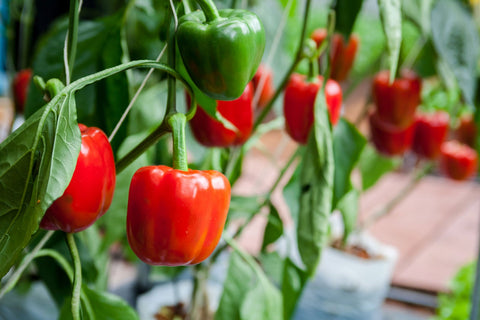As winter fades away and signs of spring emerge, gardeners eagerly anticipate the opportunity to start preparing their soil for the upcoming growing season. March marks the perfect time to assess the condition of your soil, make necessary amendments, and provide it with the nutrients it needs to support healthy plant growth. In this comprehensive guide, we'll delve into the essential steps for preparing your soil for spring, including soil testing, amending, and fertilizing, to ensure a productive and thriving garden.The following content also has some reference value for raised garden beds.
1. Soil Testing
Before making any amendments or fertilizing your soil, it's crucial to assess its pH level and nutrient content through soil testing. You can either purchase a DIY soil test kit or send a sample to a local agricultural extension office for analysis. Soil testing provides valuable information about your soil's composition, including its pH level, nutrient deficiencies, and organic matter content. By understanding your soil's specific needs, you can make informed decisions about how to improve its fertility and structure.
2. pH Adjustment
One of the most critical factors affecting plant growth is soil pH, which determines the availability of essential nutrients to plants. Most vegetables prefer slightly acidic soil with a pH range of 6.0 to 7.0. If your soil pH falls outside of this range, you may need to make adjustments to bring it into the optimal range for plant growth. To raise pH levels, you can add lime or wood ash, while sulfur or elemental sulfur can be used to lower pH levels. It's essential to follow recommended application rates based on soil test results to avoid overcorrection.

3. Organic Matter Amendments
Adding organic matter to your soil is crucial for improving its structure, moisture retention, and nutrient content. Compost, aged manure, leaf mold, and cover crops are excellent sources of organic matter that can be incorporated into the soil to enhance its fertility and tilth. Organic matter also helps promote beneficial microbial activity in the soil, leading to healthier plants and improved soil health over time. Aim to incorporate organic matter into your soil several weeks before planting to allow it to decompose and integrate fully.
4. Nutrient Fertilization
Once you've addressed any pH imbalances and amended your soil with organic matter, it's time to provide additional nutrients to support plant growth. A balanced fertilizer containing essential nutrients such as nitrogen (N), phosphorus (P), and potassium (K) can help ensure that your plants have access to the nutrients they need for healthy growth and development. Consider using slow-release or organic fertilizers to provide a steady supply of nutrients to plants over time, reducing the risk of nutrient leaching and runoff.
5. Mulching
Mulching is an essential practice for conserving soil moisture, suppressing weeds, and regulating soil temperature. Organic mulches such as straws, shredded leaves, and grass clippings can be applied to the soil surface to help retain moisture and improve soil structure. Additionally, as organic mulches break down, they contribute to the organic matter content of the soil, further enhancing its fertility and health. Aim to apply a layer of mulch several inches thick around plants, leaving space around the stems to prevent rotting.

6. Crop Rotation
Incorporating crop rotation into your gardening practices can help prevent soil depletion and reduce the risk of pest and disease problems. Rotate your crops each year to different areas of the garden to avoid depleting specific nutrients and to disrupt pest and disease cycles. Additionally, consider planting cover crops such as legumes, which can fix nitrogen in the soil and improve its fertility for future plantings.
Conclusion
Preparing your soil for spring is a critical step in ensuring a successful and productive gardening season. By testing, amending, and fertilizing your soil in March, you can create a nutrient-rich growing environment that supports healthy plant growth and abundant harvests. Take the time to assess your soil's needs, make necessary adjustments, and incorporate organic matter to improve its fertility and structure. With proper soil preparation, you'll be well on your way to a thriving garden filled with lush, vibrant plants and delicious homegrown produce.









